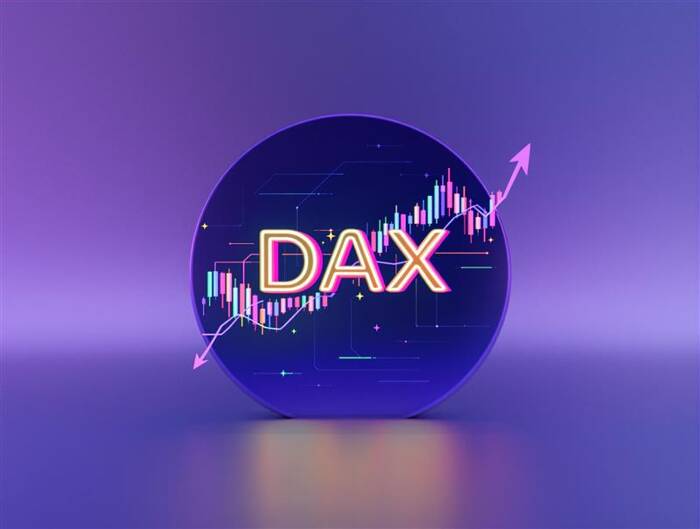On Wednesday, May 14, the Fed reaction to April’s inflation figures and trade developments will influence global equities. Support for a June rate cut may drive demand for rate-sensitive stocks, while hawkish remarks may weigh on risk appetite.
Nevertheless, trade headlines remain a key driver for sentiment, particularly for the DAX.
DAX Outlook: Trade and Central Banks to Dictate Trends
The DAX’s outlook hinges on trade news, corporate earnings, and central bank guidance.
Bullish Case: Easing trade tensions, solid earnings, and dovish central bank signals could send the DAX toward the May 12 high of 23,912.
Bearish Case: Rising trade friction, weak earnings, or hawkish central bank rhetoric could send the DAX toward 23,500.
Frederik Ducrozet, Head of Macroeconomic Research at Pictet Wealth Management, remarked on ECB signals, stating:
“A very hawkish speech from Isabel Schnabel calling on the ECB ‘to keep a steady hand and maintain rates close to where they are today – that is, firmly in neutral territory’. Inflation risks tilted to the upside because of fiscal expansion and tariffs.”
As of Wednesday morning, the DAX futures were down 66 points, while the Nasdaq 100 mini climbed 7 points, suggesting a mixed start.
Technical Setup Suggests Cautious Optimism
With four straight gains, the DAX remains above the 50-day and the 200-day Exponential Moving Averages (EMA), indicating bullish momentum.
Upside Target: A breakout above 23,750 would open the door to a move toward the record high of 23,912. A sustained move through 23,912 would bring 24,500 into sight.
Downside risk: A drop below 23,500 may enable the bears to target 23,350, with 23,000 the next key support level.
The 14-day Relative Strength Index (RSI) at 67.90 shows the DAX has room to climb toward 23,912 before entering overbought territory (RSI > 70).
